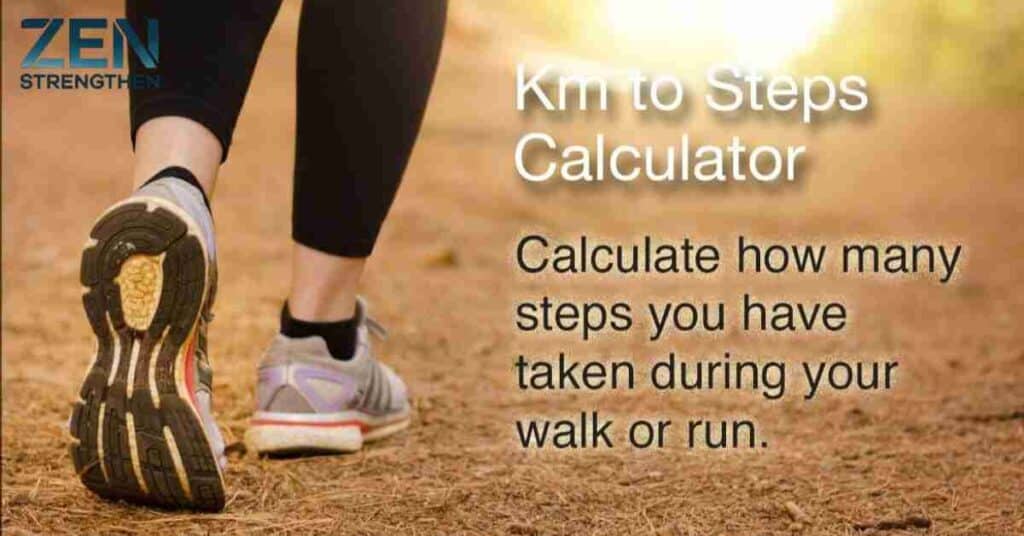Embarking on a 2 km walk s more than just a stroll—it’s a journey towards better health, enhanced fitness, and improved well-being.
Whether you’re a seasoned walker or just starting out, understanding the ins and outs of this achievable distance can revolutionize your approach to physical activity. Let’s dive deep into the world of the 2 km walk and uncover how this simple exercise can transform your life.
The 2km Walk Challenge

In our fast-paced world, finding time for exercise can be challenging. That’s where the 2 km walk comes in. It’s the perfect balance between accessibility and effectiveness, offering a wealth of health benefits without demanding too much of your precious time.
“Walking is man’s best medicine.” – Hippocrates
This ancient wisdom still holds true today. A 2 km walk might seem modest, but its impact on your health can be profound. Let’s explore why this distance has become a popular benchmark for daily physical activity.
Breaking Down the 2km Walk
Before we delve into the specifics, let’s visualize what 2 kilometers actually looks like:
- 2 km = 1.24 miles
- Approximately 20 football fields laid end to end
- About 2,500-2,700 steps for the average person
- Roughly the length of 22 city blocks
Understanding the distance helps set realistic expectations and goals for your walking routine. It’s not just about the distance, though—it’s about the journey and the benefits you reap along the way.
Factors Influencing Walking Speed
Several factors can affect how long it takes to walk 2 km:
- Age and gender: Generally, younger adults walk faster than older adults, and men tend to walk slightly faster than women.
- Fitness level: Regular walkers may cover the distance more quickly.
- Terrain and weather: Uphill walks or windy conditions can slow you down.
- Walking purpose: Leisurely strolls take longer than brisk fitness walks.
- Stride length: Longer legs often mean a longer stride, potentially resulting in a faster pace.
- Overall health: Certain health conditions can affect walking speed.
- Time of day: Many people find they walk faster in the morning when they’re well-rested.
- Footwear: Proper walking shoes can improve your pace and comfort.
Understanding these factors can help you set realistic goals and track your progress more effectively.
Average Walking Times: Let’s Crunch the Numbers

To give you a clear picture, here’s a comprehensive breakdown of average 2 km walking times based on age, gender, and pace:
| Age Group | Women (Moderate Pace) | Women (Brisk Pace) | Men (Moderate Pace) | Men (Brisk Pace) |
| 20-29 | 24-27 minutes | 20-23 minutes | 22-25 minutes | 18-21 minutes |
| 30-39 | 25-28 minutes | 21-24 minutes | 23-26 minutes | 19-22 minutes |
| 40-49 | 26-29 minutes | 22-25 minutes | 24-27 minutes | 20-23 minutes |
| 50-59 | 27-30 minutes | 23-26 minutes | 25-28 minutes | 21-24 minutes |
| 60-69 | 28-31 minutes | 24-27 minutes | 26-29 minutes | 22-25 minutes |
| 70+ | 30-33 minutes | 26-29 minutes | 28-31 minutes | 24-27 minutes |
Remember, these are averages. Your personal time may vary based on the factors we discussed earlier. The key is consistency and gradual improvement, not speed.
The Science of Walking: Why Every Step Counts
Walking isn’t just about getting from point A to B. It’s a complex biomechanical process that engages multiple muscle groups and systems in your body.
Biomechanics of Walking
When you walk 2 km, you’re using:
- Your leg muscles (quadriceps, hamstrings, calves)
- Core muscles for stability
- Arm muscles for balance and momentum
- Glutes for propulsion
- Foot and ankle muscles for stability and push-off
Each step you take involves a coordinated effort of these muscle groups, burning calories and improving your overall fitness.
Energy Expenditure During a 2km Walk
The number of calories burned during a 2 km walk varies based on factors like weight and walking speed. Here’s a detailed breakdown:
| Weight (kg) | Calories Burned (Slow Pace) | Calories Burned (Moderate Pace) | Calories Burned (Brisk Pace) |
| 50 | 70-80 | 85-95 | 100-110 |
| 60 | 85-95 | 100-110 | 120-130 |
| 70 | 100-110 | 120-130 | 140-150 |
| 80 | 115-125 | 135-145 | 160-170 |
| 90 | 130-140 | 155-165 | 180-190 |
| 100 | 145-155 | 175-185 | 200-210 |
These figures are estimates and can vary based on individual factors like metabolism and muscle mass.
Heart Rate Zones and Their Significance
During your 2 km walk, your heart rate will increase, providing cardiovascular benefits. Here’s a breakdown of heart rate zones:
- Low intensity: 50-60% of max heart rate
- Perfect for beginners or warm-up
- Improves overall health and recovery
- Moderate intensity: 60-70% of max heart rate
- Ideal for most of your 2 km walk
- Improves aerobic fitness and fat burning
- High intensity: 70-80% of max heart rate
- Suitable for short bursts or hill climbs
- Increases aerobic capacity and endurance
To calculate your maximum heart rate, use the formula: 220 – your age. Aim for the moderate intensity zone during your 2 km walk for optimal health benefits.
Health Benefits: Why 2km Can Change Your Life

A regular 2 km walk can have profound effects on your health:
Cardiovascular Improvements
Walking strengthens your heart, lowers blood pressure, and reduces the risk of heart attack and stroke. A study published in the New England Journal of Medicine found that people who walked for at least 30 minutes a day, five days a week, had a 30% lower risk of cardiovascular disease compared to those who didn’t walk regularly.
“Walking is the best possible exercise. Habituate yourself to walk very far.” – Thomas Jefferson
Weight Management and Metabolism Boost
A daily 2 km walk can help you:
- Burn extra calories (as shown in the table above)
- Increase your metabolic rate
- Reduce body fat, especially when combined with a healthy diet
A study in the American Journal of Clinical Nutrition found that regular brisk walking reduced body fat and waist circumference in participants over a 12-week period.
Mental Health and Cognitive Benefits
Walking isn’t just good for your body; it’s great for your mind too:
- Reduces stress and anxiety
- Improves mood by releasing endorphins
- Enhances cognitive function and memory
A study published in the Proceedings of the National Academy of Sciences found that adults who walked for 40 minutes three times a week showed significant improvements in memory and cognitive function.
Bone and Muscle Strength
Regular walking can:
- Increase bone density, reducing the risk of osteoporosis
- Strengthen leg and core muscles
- Improve balance and coordination
The National Osteoporosis Foundation recommends weight-bearing exercises like walking to maintain bone health and reduce the risk of fractures.
Immune System Support
Studies show that moderate exercise like “walking” can boost your immune system, helping you fight off infections more effectively. A study in the British Journal of Sports Medicine found that people who walked at a moderate pace for 30-45 minutes daily had 43% fewer sick days and fewer upper respiratory tract infections.
Creativity and Problem-Solving Enhancement
Many people find that walking helps clear their mind and boosts creativity. A Stanford University study found that walking increased creative output by an average of 60%.
“All truly great thoughts are conceived while walking.” – Friedrich Nietzsche
Benchmarks: What’s a “Good” 2km Walk Time?

While any walking is beneficial, here are some benchmarks to aim for:
- Beginner: 2 km in 30-35 minutes
- Moderate pace: 2 km in 25-30 minutes
- Brisk pace: 2 km in 20-25 minutes
- Power walking: 2 km in 18-20 minutes
Remember, the goal is consistency and gradual improvement, not speed. Listen to your body and progress at your own pace.
Measuring Your 2km Walk
Step Count for 2km: Pedometer Insights
On average, 2 km is about:
- 2,500 steps for men
- 2,700 steps for women
This can vary based on your stride length. Here’s a more detailed breakdown:
| Height (cm) | Average Steps for 2km (Men) | Average Steps for 2km (Women) |
| 150-159 | 2,800-3,000 | 3,000-3,200 |
| 160-169 | 2,600-2,800 | 2,800-3,000 |
| 170-179 | 2,400-2,600 | 2,600-2,800 |
| 180-189 | 2,200-2,400 | 2,400-2,600 |
| 190+ | 2,000-2,200 | 2,200-2,400 |
Using Technology to Track Progress
Fitness trackers and smartphone apps can help you monitor:
- Distance covered
- Pace
- Heart rate
- Calories burned
- Step count
- Elevation gain
Popular options include Fitbit, Garmin, Apple Watch, and free apps like Strava or Google Fit. These tools can provide valuable insights into your walking habits and help you set and achieve goals.
Case Studies: Real-Life 2km Walk Transformations
Let’s look at some inspiring examples of how a regular 2 km walk has changed lives:
- Sarah, 45: Started walking 2 km daily after her doctor warned her about high blood pressure. After six months, her blood pressure normalized, she lost 10 pounds, and reported feeling more energetic throughout the day.
- Tom, 62: Began a daily 2 km walk to combat feelings of depression after retirement. Within three months, he reported improved mood, better sleep, and a renewed sense of purpose. He now leads a walking group in his community.
- Emma, 28: A busy software developer, Emma started walking 2 km during her lunch break to combat the effects of a sedentary job. After two months, she noticed improved posture, reduced back pain, and increased productivity in the afternoons.
- Michael, 55: Diagnosed with prediabetes, Michael incorporated a daily 2 km walk into his routine. After a year, his blood sugar levels had stabilized, and he had avoided progression to full-blown diabetes.
These stories highlight the diverse benefits of a simple 2 km walk and how it can be adapted to various lifestyles and health goals.
Creating Your Perfect 2km Walking Routine
Goal-Setting Strategies
Set SMART goals for your walking routine:
- Specific: “I will walk 2 km every weekday morning before work”
- Measurable: Track your time and distance using a fitness app
- Achievable: Start with 3-4 times a week if daily feels overwhelming
- Relevant: Align with your overall health goals (e.g., lowering blood pressure, improving mood)
- Time-bound: “I will decrease my 2 km walk time by 2 minutes within the next month”
Choosing the Ideal Route
Consider these factors when selecting your 2 km walking route:
- Safety (well-lit, low traffic)
- Terrain (flat vs. hilly for varied workouts)
- Scenery (parks, nature trails for motivation)
- Convenience (close to home or work)
- Accessibility (paved paths for all-weather walking)
Interval Training for Walkers
To boost your fitness, try interval training during your 2 km walk:
- Walk at a moderate pace for 2 minutes
- Increase to a brisk pace for 1 minute
- Repeat for the duration of your 2 km walk
As you get fitter, you can adjust the intervals:
- Moderate pace for 1 minute
- Brisk pace for 1 minute
- 30 seconds of power walking or light jogging
- Repeat
Building a Consistent Schedule
Consistency is key. Try to walk at the same time each day to build a habit. Some options:
- Morning walk to start your day energized
- Lunchtime walk to break up the workday and boost afternoon productivity
- Evening walk to unwind and improve sleep quality
“The sum of small efforts, repeated day in and day out, is the key to walking your way to better health.” – Anonymous
Beyond the Basics: Elevating Your 2km Walk

Incorporating Strength Training
Add bodyweight exercises to your walk to build strength and burn more calories:
- Squats at park benches (2 sets of 10)
- Push-ups against trees or walls (2 sets of 5-10)
- Lunges between lamp posts (10 on each leg)
- Calf raises while waiting at crosswalks (2 sets of 15)
Mindfulness and Walking Meditation
Transform your 2 km walk into a mindfulness practice:
- Focus on your breath for the first 5 minutes
- Pay attention to the sensation of your feet touching the ground
- Observe your surroundings without judgment
- If your mind wanders, gently bring it back to your walking
This practice can reduce stress, improve mental clarity, and enhance the overall benefits of your walk.
Social Walking: Building Community Through Movement
Turn your walk into a social activity:
- Join a local walking group (check community centers or online forums)
- Start a lunchtime walking club at work
- Invite friends or family for weekend walks
- Participate in charity walking events
Social walking can improve motivation, accountability, and make your 2 km walk more enjoyable.
Conclusion
A 2 km walk might seem small, but it’s a powerful step towards better health. Whether it takes you 20 minutes or 30, the benefits are undeniable. From improving your cardiovascular health to boosting your mood and creativity, this simple activity can transform your life.
Remember, the journey of a thousand miles begins with a single step. Why not make that step part of a 2 km walk today?
“Walking is the most ancient exercise and still the best modern exercise
FAQ,s
Is 2km daily walking enough exercise?
For many people, especially beginners, a daily 2 km walk is an excellent start. As you build stamina, you may want to increase distance or intensity.
How can I increase my walking speed safely?
Gradually increase your pace over time. Try interval training and focus on proper form (engage your core, swing your arms).
How does walking compare to running for fitness?
While running burns more calories in less time, walking is lower impact and can be sustained for longer periods. Both have significant health benefits.
What should I do if I get bored during walks?
Listen to podcasts or audiobooks, vary your route, invite a friend, or use the time for mindfulness practice.
Can walking help manage chronic diseases?
Yes, regular walking can help manage conditions like type 2 diabetes, hypertension, and depression. Always consult your doctor before starting a new exercise regimen.
Disclaimer
“This article” is intended for general informational purposes only and does not address individual circumstances. It is not a substitute for professional advice or help and should not be relied on to make decisions of any kind. Any action you take upon the information presented in this article is strictly at your own risk and responsibility!

Jhon Wick is a seasoned writer in the fitness niche, dedicated to sharing expert advice and the latest trends. With a passion for health and wellness, Jhon offers practical tips and inspiration to help readers achieve their fitness goals and stay motivated.







